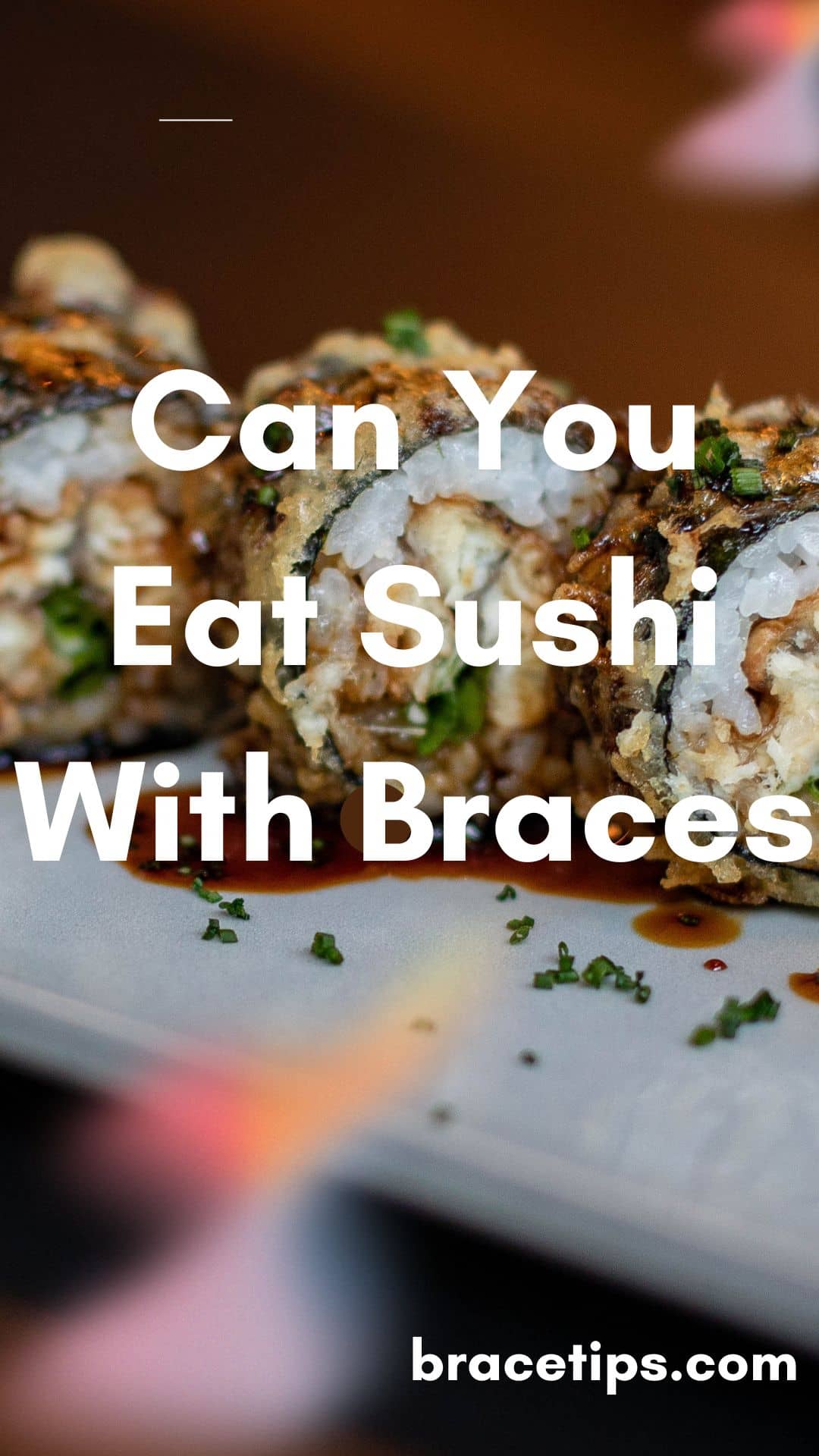Can You Eat Sushi With Braces Eating sushi is a delightful culinary experience, but for individuals with braces, it might raise concerns about potential challenges and risks. This comprehensive guide aims to address the common queries surrounding consuming sushi while wearing braces. From understanding the risks involved to offering practical tips and solutions, let’s delve into the world of enjoying sushi without compromising your orthodontic treatment. This article aims to delve into the realm of enjoying sushi while wearing braces, providing essential tips, insights, and addressing common queries to ensure a pleasant sushi experience without jeopardizing orthodontic treatment.
Can You Eat Sushi With Braces
Is Sushi Braces-Friendly?
Sushi, with its diverse ingredients and textures, can pose both benefits and risks for those with braces. Let’s explore some key aspects regarding consuming sushi while undergoing orthodontic treatment. Moreover, hard or sticky components in sushi can exert pressure on braces, causing them to break or bend.
1. Can Sushi Damage Braces?
One of the primary concerns is whether sushi can damage or break braces. The nature of sushi, particularly certain types like nigiri with sticky rice, might potentially cause issues by sticking to or dislodging orthodontic appliances. Certain types of sushi, especially those with hard or crunchy ingredients, have the potential to damage or break braces if bitten into forcefully.
2. Does Sushi Get Stuck in Braces?
Yes, sushi, particularly those with sticky or chewy components, can get trapped in braces, requiring diligent cleaning to remove. Certain sushi ingredients, like rice and seaweed, could get trapped in braces, leading to discomfort or challenges in cleaning. This can create an environment conducive to plaque buildup, potentially increasing the risk of dental issues.
3. Is Sushi Considered a Sticky Food?
Sushi, especially rolls with sticky rice, falls into the category of foods that might pose challenges for individuals with braces. The stickiness of rice or the adhesive nature of certain sushi components could contribute to problems for braces wearers. Some components of sushi, like sticky rice and certain types of seaweed, can be considered sticky and may pose challenges for individuals with braces.
How to Eat Sushi With Braces?
1: Choose Braces-Friendly Sushi:
Opt for sushi rolls with softer textures and avoid those with hard, sticky, or crunchy ingredients.
2: Cut Sushi Carefully:
Use a knife to cut sushi into smaller, manageable pieces, making it easier to chew without straining braces.
3: Mindful Chewing:
Chew slowly and cautiously, avoiding putting excessive pressure on braces to prevent damage.
4: Cleanse Afterward:
After indulging in sushi, thoroughly clean your mouth, ensuring no food particles are left stuck in braces.
Is Sushi Good to Eat With Braces?
Sushi can be enjoyed with braces if selected carefully, opting for varieties that are braces-friendly and avoiding those that might cause damage or discomfort. Provided you opt for softer varieties and chew carefully to avoid damage or discomfort.
How to Fix Sushi on Braces?
If food becomes stuck in braces, use a toothbrush and interdental cleaners to dislodge the particles gently. Avoid using force or sharp objects that could damage the braces. Use a toothbrush or interdental brush to gently dislodge the particles. If persistent, seek assistance from your orthodontist.
Tips for Enjoying Sushi With Braces
While sushi might present challenges, following specific tips can help navigate this culinary delight without compromising your orthodontic treatment.
1. Choose Wisely: Opt for sushi varieties that are less likely to stick to braces. Sashimi, which comprises thinly sliced raw fish without rice, can be a braces-friendly choice.
2. Cut It Small: Consider cutting sushi rolls into smaller pieces. Smaller bites reduce the likelihood of getting ingredients stuck in your braces.
3. Be Mindful of Ingredients: Avoid sushi with overly sticky rice or ingredients that tend to cling, like sticky sauces, to minimize the risk of debris getting lodged in braces.
4. Practice Good Oral Hygiene: After enjoying sushi, ensure thorough cleaning of your braces and teeth to eliminate any remnants that might cause issues later on.
5. Use Utensils: Consider using utensils instead of directly biting into sushi rolls to minimize contact between braces and sticky components.
6. Rinse and Clean: After enjoying sushi, thoroughly rinse your mouth and use a toothbrush to remove any lingering food particles from braces.
7. Avoid Sticky or Tough Textures: Steer clear of sushi with sticky rice or overly chewy textures as these can stick to braces, making cleaning more challenging and potentially causing damage.
Is Sushi Good for Your Health?
Sushi, when prepared with fresh and high-quality ingredients, can be a nutritious choice. Fish in sushi provides essential omega-3 fatty acids, and seaweed offers various minerals. However, the overall healthiness of sushi can vary based on ingredients and preparation methods, so mindful consumption is key. Offering lean proteins, essential fats, and beneficial nutrients. However, moderation and mindful choices are key.
FAQs About Eating Sushi With Braces
Q: What happens if you eat sushi with braces?
A: Eating sushi with braces might lead to bits of rice, seaweed, or other ingredients getting stuck in the braces, potentially causing discomfort or hygiene issues.
Q: Can sushi damage and break your braces?
A: Some types of sushi, particularly those with sticky rice or adhesive ingredients, might potentially damage or dislodge braces if not consumed carefully.
Q: How to fix sushi stuck on braces?
A: Gently rinse your mouth with water and use a soft-bristled toothbrush to dislodge any food particles. Floss carefully to remove any debris stuck between braces.
Conclusion
In conclusion, enjoying sushi with braces requires a mindful approach. While some types of sushi might pose challenges, making informed choices and practicing good oral hygiene can help mitigate potential issues. Sushi can still be a part of your diet, but being cautious and adapting your eating habits can ensure a pleasant experience without compromising your orthodontic treatment. By selecting braces-friendly sushi, cutting it into smaller pieces, and maintaining good oral hygiene practices, individuals can savor their favorite sushi varieties without compromising their orthodontic treatment. Remember, being mindful of the sushi you choose and how you consume it can make all the difference in maintaining both a healthy smile and a satisfying sushi experience.

